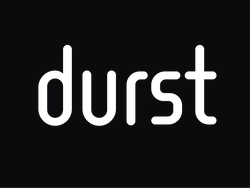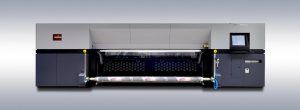Sustainability is about more than “Going Green”
Green issues are very much the “in” thing at the moment and, as with anything that is so emotive, there is a danger that complex matters will be oversimplified, or that opportunists will appropriate important issues for their own, thinly disguised ends. Even the printing industry is not immune to this phenomenon.
Digital printing is inherently eco-friendly, or so conventional wisdom would like you to believe. Indeed, one can hardly deny it, in contrast to screen printing, for example, where large amounts of solvents are needed just to create templates or wash the screen, only relatively small amounts of VOCs (volatile organic compounds) are needed, even for printing with hard solvent inks. Digital printing also offers undeniable advantages over analogue methods: far less waste, reduced storage and logistical costs and the ability to tailor entire production processes precisely to what is needed, to name but a few examples. However, looking at the bigger picture, it is clear that digital printing often has significant drawbacks compared with analogue methods in terms of workflow. This is frequently the case when it comes to employee health and safety. Printing machines from outside Europe often fail to comply with local regulations, as the employers’ liability insurance associations can readily testify. For example, the machines very often lack features that make life easier for operating personnel, for whom the work is physically demanding and a danger to their health. How many UV flatbed printers have reliable loading and unloading facilities that prevent staff having to move tons of substrate around per shift using muscle power alone?
At Durst, sustainability is deeply embedded in the company’s DNA. For the high speed printers of the Rho 1000 series, users can optimise the workflow in order to deal with the wide variety of materials and short run lengths that often characterise digital printing. For the latest generation of printers, in the case of the Rho 1012 model Durst recommends 3⁄4 automation. With the Rho 1030, which can print up to 1,000 m2, almost the entire process, from loading the printer to stacking on pallets ready for dispatch, can be planned with minimal physical effort on the part of the operator. Thanks to the modular design, existing Rho 1000 users can upgrade their machines to the quality level of the Rho 1012, using 12 picolitre heads for resolutions of up to 1,000 dpi, or to the productivity level of the Rho 1030. This is just another part of the overall sustainability picture.
Sustainability means much more than just a vague “green sympathy”. When the concept is properly thought through, it means not only taking a responsible attitude to people and the environment, but also making efficient use of precious resources. It also involves long-term business success, in which reliable machines that hold their value are a key factor. After all, people only have room to develop and grow if they are fairly paid and can work in safety.
In the case of UV inks – today’s prevailing technology which will no doubt dominate highly productive industrial environments for years to come, vague “green” arguments frequently obscure the true facts. One thing common to many UV inks is that under European standards (Council Directive 1999/13/EC) they are free from VOCs. However, like most industrial materials, they still carry potential risks (e.g. irritation or allergic reactions) for users and final customers. It is the duty of every participant in the process chain to manage and minimise these risks. This means, first of all, that the ink ingredients must be reliably shown and must verifiably comply with the appropriate standards. All Durst inks are RoHS compliant and contain no heavy metals or other poisonous or corrosive substances. Users can rely on this, from one batch to the next. This is not necessarily true of products imported from outside Europe and products are not continuously monitored at the EU external borders. Since Durst is committed to the concept of sustainability, its inks exceed the legal requirements in many areas. Therefore, for example, Durst inks satisfy various European standards for the production of toys (e.g. DIN EN71-3, Safety of toys – Part 3: Migration of certain elements), the Nordic Swan Eco-label can be achieved using Durst machines in combination with its original inks, and the ink types Rho Premium Rigid 30DM, Rho Roll 30DM and the inks for the Omega 1 are certified by Greenguard® because they emit extremely low volumes of harmless substances into the atmosphere. In addition, Durst has the odour of all inks regularly assessed by independent testers, even if it is merely disagreeable rather than harmful. To eliminate even the slightest risk, Durst also recommends that UV printed packages should not come into direct contact with foodstuffs, so that there is no possibility of traces migrating even under the most adverse conditions.
The overall balance of energy consumption of a printing process is an important criterion for the carbon footprint of the end product. Durst inks therefore cure very energy efficiently relative to the machines’ productivity. Where the UV lamps give off ozone, it is extracted by the machine and does not enter the ambient air of the production hall. Finally, even at the end of their lifecycle, print products produced with Durst UV inks contribute to sustainable development. Thanks to the plastic-like surface of the print layer, UV inks, in contrast to many water-based inks, are easier to separate from the paper fibre using customary recycling methods.
Genuine sustainability is not just about getting a “green badge”; it means converting a sense of responsibility into stable and verifiable processes, from the production of a product all the way through to its disposal.




